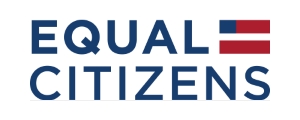Candice Delmas, *A Duty to Resist: When Disobedience Should Be Uncivil* (Oxford University Press, 2018).
Political obligation has always been a somewhat unsatisfactory topic in political philosophy, as has, relatedly, civil disobedience. The “standard view” of civil disobedience, to be found in Rawls, presupposes that we live in a nearly just society in which some serious violations of the basic liberties yet occur and conceives of civil disobedience as a deliberate act of public lawbreaking, nonviolent in character, which aims to communicate a sense of grave wrong to our fellow citizens. To demonstrate their fidelity to law, civil disobedients are willing to accept the consequences of their actions and to take their punishment. When Rawls first wrote about civil disobedience, in 1964, parts of the US were openly and flagrantly engaged in the violent subordination of their black population, so it was quite a stretch for him to think of that society as “nearly just”. But perhaps its injustice impinged less obviously on a white professor at an elite university in Massachusetts than it did on poor blacks in the deep South.
The problems with the standard account hardly stop there. Civil disobedience thus conceived is awfully narrow. In truth, the range of actions which amount to resistance to the state and to unjust societies is extremely broad, running from ordinary political opposition, through civil disobedience to disobedience that is rather uncivil, through sabotage, hacktivism, leaking, whistle-blowing, carrying out Samaritan assistance in defiance of laws that prohibit it, striking, occupation, violent resistance, violent revolution, and, ultimately, terrorism. For the non-ideal world in which we actually live and where we are nowhere close to a “nearly just” society, we need a better theory, one which tells us whether Black Lives Matter activists are justified or whether antifa can punch Richard Spencer. Moreover, we need a theory that tells us not only what we may do but also what we are obliged to do: when is standing by in the face of injustice simply not morally permissible.
Step forward Candice Delmas with her superb and challenging book *The Duty to Resist: When Disobedience Should Be Uncivil* (Oxford University Press). Delmas points out the manifold shortcomings of the standard account and how it is often derived from taking the particular tactics of the civil rights movement and turning pragmatic choices into moral principles. Lots of acts of resistance against unjust societies, in order to be effective, far from being communicative, need to be covert. Non-violence may be an effective strategy, but sometimes those resisting state injustice have a right to defend themselves.
[click to continue…]

 I went there for the
I went there for the  Last year, I asked you to
Last year, I asked you to 


